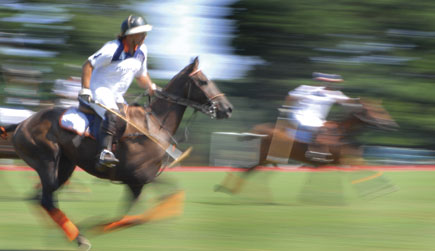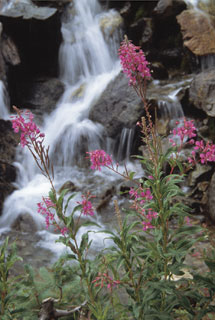Exposure Basics II
Now we come to how exposure and creative photography go hand in hand.
Why would you need to change the aperture or shutter speed under different lighting conditions? Why would you want to use a fast shutter speed for one shot and a slow one for another? Why change apertures or ISO?
That goes to the heart of the photographic exposure system and is one of the most important aspects of the craft. As we explore this further we’ll talk about “image effects.” These are ways in which you interpret the scene using the tools of the camera.
 |
|
|
Shutter Speed
Shutter speed allows you to choose how motion will be depicted. Using a fast shutter speed of 1/1000 sec (and a fast framing rate for making a number of shots) I was able to catch the scarf in midair as it was tossed by this street performer on the promenade in Old Quebec.
In terms of image effects, shutter speed determines how motion is depicted in a photograph. In terms of picture quality, it also has a profound influence on how steady the image appears, depending on the equipment you are using and how steadily you can hold the camera without a tripod or other supporting setup.
 |
By using a slow shutter speed of 1⁄8 sec and “panning,” or following the motion of a subject across the field of action, I was able to depict the action of this polo match.
Though the lowest hand holdable shutter speed differs depending on how steady you are and the gear you have to balance, the borderline is generally at or below 1⁄30 sec (such as 1⁄15, 1⁄8 sec etc). This might change if you are using a vibration reduction or image-stabilization lens, in which case you might be able to get by with a 1⁄15 sec exposure.
 |
A 1⁄30 sec is “slow” because it is probably the slowest speed at which most people can hand hold a camera without the image showing some shake, or blur caused by photographer motion.
A slow shutter speed allows you to depict interesting time/motion image effects. This waterfall behind a small stand of flowers was photographed using a tripod with the camera set at a shutter speed of 1⁄8 sec.
Fast And Slow Image Effects
Given that you can steady the camera with a tripod, a slow shutter speed can also depict motion in ways the unaided eye cannot see. The flow of water, or the swift moves of an athlete, or moving traffic when photographed at a “slow speed” (below 1⁄30 sec) can take on an otherworldly look, in which the passage of time and motion through time are shown in ways hinted at by modern physics but rarely seen by the eye. Slow shutter speeds also come in very handy when shooting with flash, as it allows for techniques such as slow sync (more on slow sync later).
Fast shutter speeds, on the other hand, freeze motion in ways the eye cannot. Today’s digital cameras have framing rates at speed such as 1/8000 sec at up to eight fps. This splits time into fractions too small to ever be seen without a camera. It can show us a ball frozen in midair as it leaves the pitcher’s hand or a diver just as he or she cleaves the water.
This photo of Emma Polgrean showing her jump-roping form was made with an exposure of 1/1000 sec at f/5.6, a speed that guaranteed catching her in midair
 |
Of course, not every use of shutter speed need be as dramatic as described above. In general, we use shutter speed to ensure that we have a steady shot, and usually something in the range of 1/125 to 1/500 sec will do the job, except with very unsteady hands, very strong wind conditions or when hand holding very long, heavy lenses.
F/stop, Or Aperture Settings
Aperture refers to the diameter or the opening in the lens through which light travels when an exposure is made. It works with “stops” that are variable between the maximum (widest) and narrowest (minimum) opening the lens offers. The higher aperture numbers represent the narrower openings, as the numbers are actually fractions that are represented by terms such as f/16 or f/4; think of it as, for example, 1⁄4 being a larger value than 1⁄16, thus f/4 is a wider lens opening than f/16.
Aperture is a way to control light volume, but it also plays a critical part in the depiction of sharpness through the picture space, or the visual relationship of near-to-far subjects—what is known as depth of field. A narrower aperture, all other things being equal, such as the focal length of the lens and the distance between the camera and subject, will yield more sharpness throughout that space. A wider aperture will yield less of a range of sharpness from near to far.
 |
Wide angle lenses and narrow apertures combine to deliver a zone of sharpness, or “depth of field” that cannot be seen by the unaided eye. This boat and the distant building are both sharp due to use of a 24mm lens at f/22, with focus on the bow of the boat.

















































